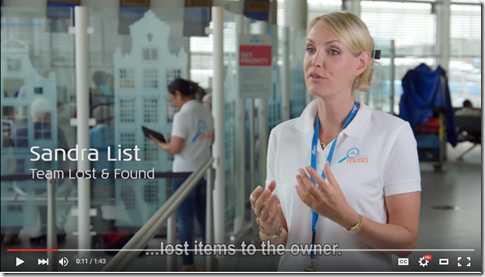The next time you’re on Facebook (which, if you’re anything like me, will be in the next 10 seconds, if not sooner) try posting three items that in your judgment are equally interesting.
For the first one, just write some copy like this.
For the second one, add a picture. It doesn’t even need to be related to the post, but it would help.
Finally, post a video. Preferably something funny. It doesn’t need to be long. Even a GIF will do. Just make it move.
Now sit back and see how many responses you get to each.
I’d put the video as the odds-on favorite to get the most attention: likes, shares, comments.
Why is that?
Ask yourself this: would you rather read a book or watch a movie? Would you rather sit in a classroom and listen to a professor tell you about the economy (snore!) or hop onto YouTube and watch a fun video explaining the same information in under five minutes?
Now before I start getting comments about how people should be reading more and that’s what’s wrong with society, people don’t read enough, let me tell you you’re preaching to the choir. I’m an author. I’ve written two books: one fiction, one non-fiction. I get it.
I’m also an avid reader.
But we live in an ever-increasingly visual society. This isn’t news.
However, too many content marketers and social media posters haven’t fully grasped the change and are still posting info that may be very helpful but isn’t connecting with their target audience because it’s the wrong presentation style.
So how do you reach your target, the ones who are going to buy your product, tout you to all their friends, and become your biggest brand advocates?
Grab the (Red) Bull by the Horns
There are certain companies that totally get it. Red Bull is one of them.

Check out their YouTube channel. It’s packed full of visuals. Talk about a company that knows how to use a GoPro!
Adrenaline junkies eat this stuff up!
What Red Bull understands is that the energy drink is a secondary story.
Read that again.
Yes, they are trying to sell as many cans as possible, because therein lies the profit, which is the bottom line.
But what they have done is turn event marketing and visual storytelling into their most effective sales channel by identifying their core market (15-25 year old males) and hitting them right between the eyes with adrenaline-packed sports (the X-Games were partially their idea and they were the first sponsor) that fit perfectly into their core audience’s personality.
Rope the kids in with the fun and drink sales will follow. Get the brand in front of their faces first. Everything else will happen on its own as a natural outcome.
And it’s worked like a charm. Red Bull is the market leader, with Monster nipping at its cloven-hooved heels.
Meanwhile, Back at the Ranch…
So how does this work for your company, especially since you probably don’t have a multi-million dollar content marketing budget?
You don’t have to have deep pockets to make a visual splash. Just ask anyone who has posted a smart phone video that went viral.
It wasn’t the production quality that sent its popularity soaring. It was the content.
Something about the story it told caught viewers’ attention and compelled them to share it with everyone they knew, and some they didn’t.
How do you become a better visual storyteller?
Check out NewsCred’s predictions for 5 Visual Marketing Trends That Will Dominate 2016.
Who knows? Maybe this will be your year to become the next YouTube sensation!



